John Hurrell – 26 December, 2016
The title of the project (ILK) comes from a three letter client code devised by architect James Fenton who combined the street address with the artist's name (Isobel Lone Kauri). Thom is preoccupied with a holistic ecologically sound lifestyle so these portable architectural ceramic sculptures are ways of exploring different design alternatives. In the chosen motifs, wall elevations and floor plans, everything is cohesively linked and matched in her working space; a total unit where all elements are visually related.
The planning and building of an unusual artist’s studio in Karekare - in particular the fired production of a large ceramic component for its tile clad walls, roof and floor (three different varieties), plus some furniture (lampstand, sink, charcoal burning rocket stove) - creates this very focussed Malcolm Smith Gallery presentation about a dwelling that will start being constructed in March. This look at it was initiated by Balamohan Shingade, the gallery’s director.
The artist, Isobel Thom, was born and raised in Howick, and though she was linked to a coterie of Auckland artists that emerged in the early nineties (many of whom were part of Teststrip), in recent years - after her return from a decade in New York - she has become more known for her black and white ‘cubist’ self-portraits and her production of functional ceramics. The latter often seems to be a means of drawing (via painting glazes on plates) and maquette making. Thom’s planned building looks like a blunt-nosed boat on stilts that will project out of the side of a bush-covered hill so that there is a car port underneath.
The title of the project (ILK) comes from a three letter client code devised by James Fenton (one of two architects involved; the other is Steven Lloyd) who combined the street address with the artist’s name (Isobel Lone Kauri). Thom is preoccupied with a holistic ecologically sound lifestyle so these portable architectural ceramic sculptures are ways of exploring different design alternatives. In the chosen motifs, wall elevations and floor plans, everything is cohesively linked and matched (functionally and aesthetically) in her working space; a total unit where all elements (architecture and applied arts) are visually related.
Hundreds of tiles are involved, especially the slatelike rectangular designs Thom has prepared for the outer cladding, and the curved ones for the underbelly. These are left to dry naturally before being glazed and taken to different kilns to be fired to achieve different tonal and colour effects. A curved arching parabolic mould is used for bending the flat clay so that for certain tiles the desirable concave forms are fixed when fired.
Although Thom’s painting and ceramics are often talked about in terms of cubism they are not cubist in the strict sense - she has a interest in facets or multiple planes which is quite different from what say, Picasso and Braque were interested in, which was the viewer’s (painter’s) movement in relation to the subject (like a head, guitar, or bowl of fruit.) The two painter friends were fascinated by common assumptions about ‘reality’ and the conventions by which objects are mentally described, and those aspects we ordinarily ignore or forget - like the underside of a table, or the back of a head. They wanted to incorporate various marginal perspectives (views or vistas) in a cluster to make a new type of visual understanding.
Thom‘s interests are different. She is driven by functionality and visual and conceptual unity bound to sound ecological avoidance of waste. Her obsessive love of ceramics (you could argue a fetishisation) means she wants to use that technology for looking at other methodologies (like drawing, sculpture, utensil design, architecture) and ‘filtering’ them through it. This studio is likely to be regarded as an extraordinary utilitarian artwork in its own right, architecture that is a variety of walk-in ‘working’ ceramic sculpture, where all design and production aspects co-exist in harmonious, carefully considered co-ordination.
John Hurrell

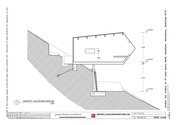

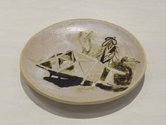
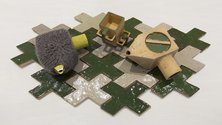
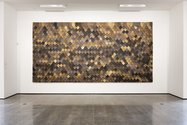
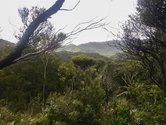
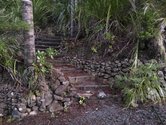
 Two Rooms presents a program of residencies and projects
Two Rooms presents a program of residencies and projects Advertising in this column
Advertising in this column



This Discussion has 0 comments.
Comment
Participate
Register to Participate.
Sign in
Sign in to an existing account.